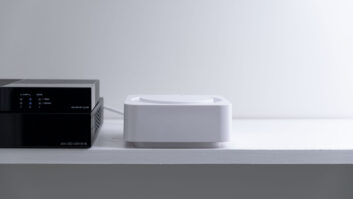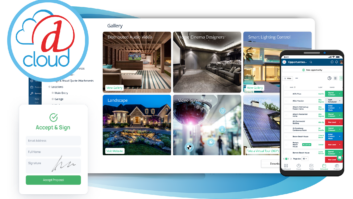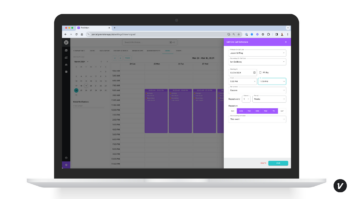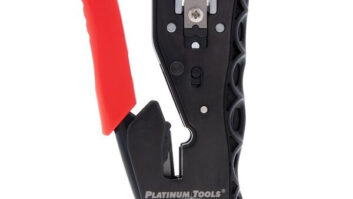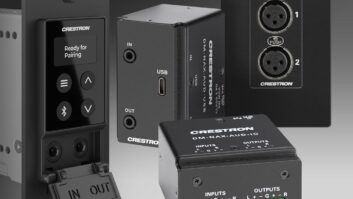
The Access Unity Network features a combination of enterprise-grade Cisco and Ruckus hardware and arrives custom programmed and ready for plug-and-play deployment with Access Networks’ signature three-year services and support warranty. Have you seen the studio apartment that transforms into multiple spaces with a simple gesture command? How about the trash can that orders groceries?
The internet of things is certainly the tech industry’s darling of the moment. Most of the headlines have to do with how the IoT is poised to take over the home, some favorite devices—ahem, Nest— associated acquisition of little startups by big corporations, and these quirky futuristic applications.
Here are a few tangible growth stats: over 40 percent of U.S. broadband households are likely to purchase a networked smoke or fire detector and 25 percent are interested in connected motion or window sensors and smart thermostats, according to research from the Parks Associates, a market research and consultancy specializing in emerging consumer technology products and services. And along with these changes comes the necessity for enterprise grade networking gear, management tools, and other support services.
Selling these networking device and services is evolving, as a result, while the companies that create these components for custom installation pros adapt their product lines and offer support for the technology challenges dealers may be faced with.

Access Networks offers the Ruckus Wireless ZoneFlex R300 wireless access point for bandwidth hungry and latency sensitive applications. It’s no longer ok for the home network to be “good enough,” as has been the case for many homeowners in the past. There are simply way too many devices that are too important and that are on the internet, and of course, this is exactly what’s expanding with the connected home. Dealers can play a critical role in articulating this necessity to clients with improved understanding of IP technology.
“It is critical for dealers wanting to thrive in the future of the IoT to understand basic technology instead of outsourcing this to IT integrators,” said Nick Phillips, vice president of sales and marketing at Pakedge Device & Software. “Dealers must also take this knowledge and apply it against their customers’ needs, which are more focused on end-user devices like televisions, smartphones, tablets, etc., and translate that into basic network infrastructure requirements.”
The advent of wireless gadgets at home has also contributed to the necessity of a strong and reliable network backbone. Even though it is rather out of sight out of mind, when a connected device fails to work properly, the result can be catastrophic for the homeowner—from entertainment hitches to productivity losses at work or incomplete homework assignments. “As constant connectivity renders downtime unacceptable, our clients’ view of the network will shift from acquiescence to acceptance, and the sale of a more robust network, such as an enterprise-grade solution, will become a more widely understood necessity,” said Sarah Fleishman, director of marketing, Access Networks.

With the rapid growth of IP-connected devices comes the need for solid networking foundation and management tools.
While the importance of a solid network has grown, its role as a backbone at home isn’t particularly new. The existence of the internet as a basic home necessity has been the status quo for quite sometime. Educating homeowners on the quality of the components used for the network is one area that there is new opportunity for dealers to add value, according to Clark Roundy, VP marketing and product management at Luxul, who considers the use of commercial grade equipment “almost mandatory to ensure a great experience.”
“The average consumer grade components just don’t cut it anymore for a reliable residential network.”

Luxul’s family of wireless access points includes both dual band and single band commercial solutions. In terms education, for dealers and homeowners alike, Gigabit internet is a relatively new concept that according to Mike Maniscalco of ihiji, “is going to change everything they are doing,” from the equipment specified to the services provided to clients.
Maniscalco has been surprised to find that many dealers don’t know what Gigabit internet is. Put most simply, it is about 100 times faster than your average internet connection, enabling content delivery to occur much quicker. When 4K streaming eventually goes mainstream (Netflix has already started streaming in 4K and the BBC tested it out during the World Cup), Gigabit internet is what is going to bring it into the home. Recently, it has really picked up steam, and the expectation is for Gigabit internet to hit 50 states by next year, Maniscalco said.
The most important thing dealers need to know about networking right now is keeping up with the trends, most important of which is Gigabit internet and what comes along with it. The volume of new services that will be offered and the number of new devices hitting the network greatly complicates the whole service support picture, he said. Adapting to these trends, putting a new set of tools in place, and continuous training on the new technology is critical.
Product Evolution
As devices on the network have become more demanding, companies have adapted some of their products and services.
One addition Access Networks has made is that of Gigabit routers in all of its custom solutions. A series of new access points with Ruckus Wireless’ BeamFlex+ technology, which is designed to keep mobile devices connected regardless of vertical or horizontal orientation, is also a new offering.

The Luxul XBR-4400 commercial grade multi-WAN Gigabit router provides Gigabit performance across all ports for residential and commercial networks. Luxul has been developing cost effective wireless controller technologies to deliver a more seamless streaming media experience, which will soon be available in the company’s wireless access points. A new line of switches and routers designed specifically for the AV market to help hide cables is also in the Luxul product pipeline.
Pakedge recently introduced the Connect+ Platform to provide a single unified interface for both IoT and non-IoT devices to connect, interoperate, and access the web and various cloud services. “The Pakedge Connect+ Platform is a carefully integrated system of switches, routers, wireless, power management, and software technologies designed specifically to work with each other to deliver seamless, scalable, and reliable multimedia networking performance,” Phillips said. “When unified with the BakPak cloud management system, the functionality of the Pakedge Connect+ Platform is extended with cloud-enabled services, such as monitoring and management of all connected devices—anywhere, anytime, and from any device.”
As a service provider exclusively, ihiji’s products are continuously evolving with dealer feedback and trend analysis. From the start, the main service was to issue alerts when problems occurred on the network. Now, ihiji offers more of a network management tool. “That’s where we’ve become focused because the need as you add hungrier bandwidth services—services that really rely on that heavy bandwidth—and as you’re multiplying the number of connected devices (I think five-fold in the next five or six years), you need tools to better manage the network,” Maniscalco said, adding that, “there really aren’t tools that are designed to do that for the home and small businesses.”
Mega Network Tips
Networking equipment is highly scalable, which is a major benefit they all offer, but with added scale, often comes significant complexity, which can be a major sticking point for many dealers with limited networking experience.
The key to managing this complexity is education, according to Luxul’s Roundy. To accommodate this need, Luxul offers a range of free educational webinars, “how-to” videos and documents, as well as regular onsite training at distribution partner facilities. Roundy also stressed the importance of using high quality, commercial grade components, in addition to proper planning and documentation. Free system design assistance is available from Luxul in addition to other recommendations for optimizing the network.
Access Network’s Fleishman repeatedly stressed the importance of enterprise grade equipment on large installs. Benefits of using enterprise grade gear include VLAN segmentation, Gigabit routing and switching, options for full redundancy, and extensive network visibility for troubleshooting. This is in addition to reliability and longevity without dropped signals or latency. “For a [mega] project like this, the network is a major infrastructure and should be treated as such,” she said. “Talk to your clients about the network first. Explain that the automation system and streaming media devices they want will only function properly if the IT infrastructure (aka what they need) is capable of handling the demands of these devices.”
“Arming yourself with an enterprise-grade network and proper troubleshooting tools will allow you the confidence to say ‘yes’ to your clients’ projects, no matter how large or complex,” she said.

The R60D router from Pakedge brings enterprise-grade functionality to AV networks. Two WAN ports allow failover in the event of an outage, and a built-in USB port enables 3G/4G wireless uplink for continuous link connectivity.
Time and planning are the biggest keys to deploying a successful network in those very large homes, according to Pakedge’s Phillips. This involves understanding both current and future needs for the client. There must be a significant investment, and any change out can be costly too. “Therefore, it is critical that the network be future-proofed to meet the needs of the customer now and in the future, even if they don’t know what the future holds.”
A sensible project management plan and troubleshooting structure are also part of the planning process. In a mega project, with myriad technologies and vendors, problems are inevitable.
The setup and deployment are areas where time investment needs to be appropriately allocated; this is often underestimated, Phillips said, and dealers can end up absorbing the cost of extra time. “Changes midway through the project may have system ramifications downstream,” he noted. “Proper project planning, including accounting for project creep and scope changes and adding in an extra buffer of time for unforeseen circumstances, should be incorporated. In high-budget projects, the installer can set up a contractual arrangement to address the scenario in case a project deployment takes longer than expected.”
Another tip Phillips recommended, if possible, is to test certain tasks offline in a controlled environment ahead of time. Lastly, choose enterprise grade equipment and know the warranties, technical support, and software upgrades available. Don’t allow the premium cost this gear comes at to be a deterrent. “It’s no use saving a few dollars, then finding out the equipment can’t support the customer’s needs or incurring more expenses in installation costs because the technical support isn’t sufficient to get you through the installation,” he said.
Investing in the proper training is important to succeed with large projects, according to Maniscalco, who also recommends bringing in the right technical partners if necessary.
While the home network can often be a complex and daunting element of any installation, the right selection of gear, service tools, and technical know-how will ensure successful projects. Practice makes perfect, and it will likely be rare that upcoming jobs will not include networking solutions. Take the time to master the network, along with the recurring revenue models it opens up, and in doing so, embrace the future of residential technology.
